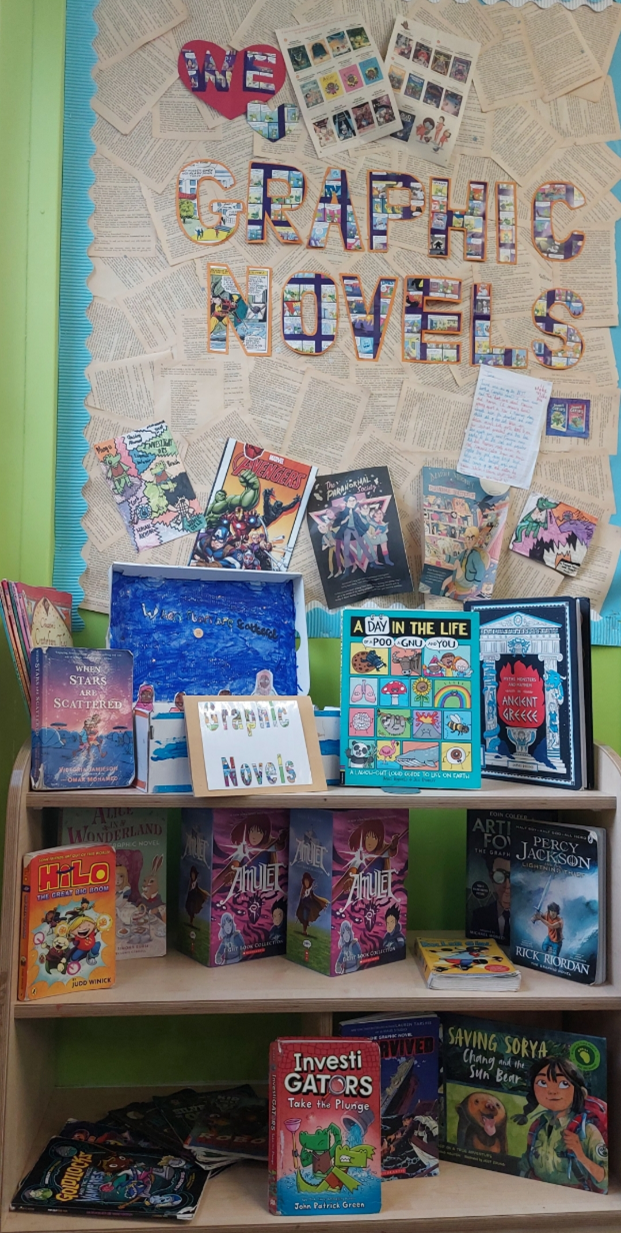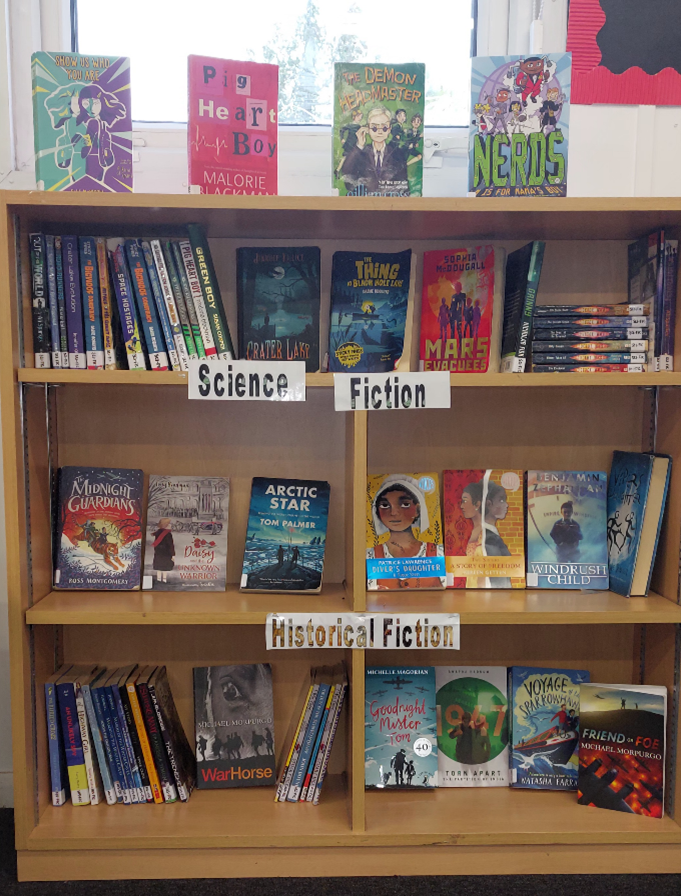Rumena Aktar, primary school librarian, shares how a library can inspire children to read
by Rumena Aktar on February 29
8 min read
Just A Room Full of Books? Rumena Aktar takes a close look at how a library, and it’s librarian, can support children to become enthusiastic readers.
They say that without a librarian, a library is but a room full of books. And who am I to say they’re wrong? After all, the librarian isn’t just the holder of knowledge wielding the scanner. Librarians hold the keys too. The keys to the stories. They are the gatekeepers. The one’s who will put the right book in the right child’s hands and spark an enthusiasm for reading for a lifetime.
Alas, school librarians are a rare breed and primary school librarians, like me, are almost mythical. Or should that be legendary? With more and more cuts to school funding, the chances of finding yourself at a primary school with a librarian are becoming even less likely. So how should primary educators navigate the issue of setting up and running a school library in their bid to creating a culture of reading at their school?
Librarians Matter
Firstly, get yourself a librarian. So, funding may not allow for you to have an in-house librarian, but there are plenty of librarians out there to support you. This could be from a local school, or even a secondary school within your academy/trust or network. I personally recommend using your local school library service. Even as a librarian, I benefited massively from their knowledge, support and their sheer enthusiasm for books. Subscribing to your school library service will also give you the opportunity to borrow hundreds of books every term so that you are regularly updating your stock without having to pay for brand new books! Most offer an auditing service too, so you will be able to see what gaps you have in your stock and how to improve the selection for your students.
Librarians are worth their weight in gold for their knowledge on books alone. Many educators will tell you to read the Harry Potter books or some Julia Donaldson or even Roald Dahl (still!). You’d be forgiven for thinking that newer authors simply didn’t exist. But a librarian will tell you about the wealth of new authors and illustrators out there that have created this golden era of children’s literature that we now find ourselves in. That’s not to say you can’t stock or recommend the above books, but how will you find the right book for all your children if you don’t cater to their interests and needs by introducing them to books that are relevant and representative?
Setting Up
Once you’ve consulted a librarian, you will have a much better understanding of where you and your school are at with your book stock and how you can better improve things to support your children to embark on a lifelong love of reading. Meanwhile, here are my top tips on how to make the best of your school library.
1) Leadership
In the absence of a librarian (and even with one) it is essential that SLT are involved from the offset. If you are serious about creating a reading culture and encouraging everyone to read for pleasure, it is imperative that the leadership are involved and support in setting out a vision. With this in mind, if you haven’t got a librarian, you must have someone to lead the day to day running of the library and allocate time for them to do this. With the Reading Lead, SLT and library manager working together, a solid team is formed that will be able to disseminate knowledge and support all staff to successfully use the library.
2) Library Usage
Now you must decide how you are going to use the library. Free use during recreational times will allow for creative thinking and crucially, create a reading community where children can share and learn with those they might not necessarily be friends with. But also, set class times to ensure every child has access to this magical reading space. Also consider how that class time is used. For the youngest, I like to make sure they have story times but also lessons on what happens if books aren’t looked after, for example. Role modelling good reading is essential in the early years.
3) Variety
It sounds very cliched, but variety really is the spice of life. Without the choice, you will constantly have a battle with children telling you they hate books and they hate reading. When you have an alternative for every child, you will find something for everyone and an avenue for all children to get into reading. So, when purchasing books and updating your stock, consult your students. What do they want? Make sure you have a wide selection under every genre. Funny books are extremely popular, but if you only stock the celebrity authored novels and the ones that are easily available on supermarket shelves, it will be very hard to broaden their reading tastes and move children on once they have finished that set of books.
Ensure books by diverse authors feature on every shelf. Don’t just reserve one area for books by Black authors, for example. If you have a mystery section, make sure you have Sharna Jackson and Annabelle Sami books alongside your Enid Blyton!
Also, make sure you have a wide selection of comics, magazines, newspapers and (especially) graphic novels. This will support children who “don’t like books” to find something that they can digest. Our selection of Guiness Book of Records is extremely popular. And the Graphic Novel selection is, without a doubt, our most used area of the library.

4) Less is More
While it’s important to have a broad choice of books, try not to overwhelm them with a ‘Beauty and the Beast’ style library. Wall to wall bookshelves might seem great to us as adults, but for children going into a library, seeing the spines of the books is not necessarily going to draw them in. Use fewer books on the shelves and rotate them regularly with books that you keep in stock. Place them forward facing on the shelves and you will see children varying their diet and trying something new.

5) Organisation
I laugh now at my ideals for when I first started up my library. “Just do things which I know worked for me as a child”, was pretty much my philosophy. Fiction by author’s surname in alphabetical order. Non-Fiction in a basic Dewey Decimal system order. As a child, I found my way around the library after same basic guidance so surely our students would too. I couldn’t have been more wrong.

I hadn’t taken into account that many of our pupils didn’t have books and shelving at home and had never ever seen the inside of a library. It took a while for the first cohort of children to work out how to use the library that I had so meticulously planned out. While teachers found it easy to find the books that they wanted (they used the same books and knew which authors they wanted) children would ask for an adventure book or a funny book and didn’t know how to find them. So, in my third year, I decided to completely reorganise things and look at it through our children’s eyes. With the help of my brilliant student librarians and the use of pupil questionnaires we started to label our fiction books according to genre. Non-fiction books were placed in simpler topic order according to what was most popular with students.
So, when organising your library, I highly recommend you seek out your pupils’ needs. Organise shelves according to the books that they want to read, making it easily accessible so that even if a supply teacher comes to the library, they can support children to find a good book to take home.
Clearly label your books that are only appropriate for older year groups. Colour code books according to genres or linked with certain sections of the library to make it easier for staff and children to tidy up after themselves too.
6) Reader Teachers
Perhaps, the best advice I can give is to support every teacher to become a reader. Role modelling reading is without a doubt the most effective way to encourage your children to love reading. Read aloud to them and in those moments show them how enjoyable and how relaxing reading is. But also, read the books in the library. Teachers with knowledge of children’s literature will find it much easier to recommend books and talk about books to their students.
One of the best things about library spaces is the sheer joy of seeing children share books and recommendations. There’s a real community that can be built around reading and when the adults join in, we can steer our children’s ideas and understanding of the world through the books they read.
Encourage books for empathy and help your children to choose books which provide an insight into lives different to their own. If you don’t know much about current children’s literature, join a reading community online, tap into the fantastic reading community on Twitter X and Instagram. Join the Open University Reading for Pleasure newsletter, for lots of reviews and ideas to help engage your students with reading. Websites like Just Imagine Centre and Books for Topics provide excellent reviews that will help you to get to know some of the newer titles so you can choose a range of books to put on your shelves.

Finally make it fun! The library should be buzzing with excitement. Encourage quiet behaviour, but libraries really don’t need to be silent! The children should be able to discuss their book choices, read to each other and discuss what they are reading. That infectious chatter about books is what will build a community of readers and ensure your library flourishes.